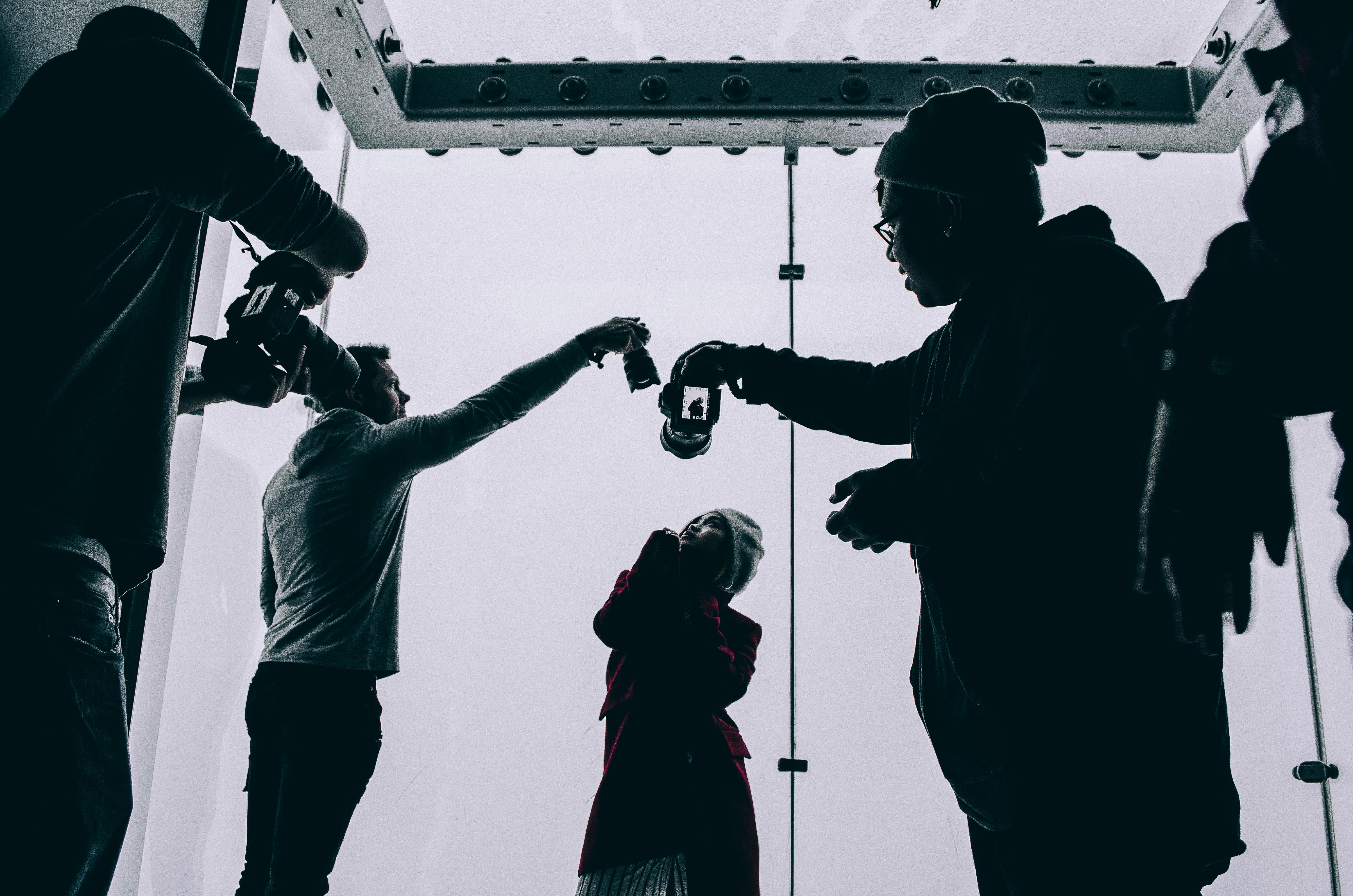Originally written for our AMI weekly client newsletter — ami:INFORMED — we thought this roundup was worth sharing more widely. AI in advertising has dominated headlines, yet real-world case studies remain limited, and many questions still linger. In five thought-provoking points below, we explore where the industry currently stands with AI-use at work and in the work we produce.
The Industry Is Starting To Notice AI Productivity Risks
More research is coming out showing that generative AI is great at speeding up tasks but there are some significant personal downsides to its usage, especially for younger generations. One concern is its addictive nature: it provides a dopamine hit not dissimilar to that encountered on social channels. And perhaps more unexpectedly, use of generative AI is also linked to slower career progression as it can result in a loss of confidence and prevent workers from gaining skills needed to get promoted.
The article does not advocate for stopping to use AI. Instead, it highlights the importance of balancing engagement with and contemplation of the task at hand with the speed needed to do it. Having boundaries and engaging your own brain before asking the chatbot seems to be something we will all need to learn to do.
AI Search Has Already Changed Consumer Behavior
Speaking of AI and marketing, Bain & Company’s research found that majority of consumers already rely on AI generated zero-click search results a lot:
“Bain’s recent survey finds that about 80% of consumers now rely on “zero-click” results in at least 40% of their searches, reducing organic web traffic by an estimated 15% to 25%.”
At least for now, AI search is not as seamless as it sound. AI answers still need to be cross-checked on traditional search and different AI search engines have different strengths, keeping the consumer in a ‘test & learn’ mode and requiring upskilling in order to engineer better prompts.
Regardless, this is a huge shift in consumer habits. Changes will need to be made in SEO and campaign attribution to accommodate the growing zero-click tendencies.
This also made us think about audience segmentation. Can everyone be reached via AI search engines or are certain demographics more likely to be there?
Not all AI engines are thinking of adding ads, not everyone can afford to use all AI engines too, but it is easy to imagine the future where we will be discussing ChatGPT campaigns for B2B due to corporate subscriptions or affluent targeting due to the cost of certain tools:

OpenAI Future May Be Without Ads But Not Without Better Consumer Tracking
But would OpenAI add ads to ChatGPT? Sam Altman is not currently keen on it if it cannot be done tastefully. He is much more keen on something else though:
“The kind of thing I’d be much more excited to try than traditional ads is a lot of people use Deep Research for e-commerce, for example, and is there a way that we could come up with some sort of new model, which is we’re never going to take money to change placement or whatever, but if you buy something through Deep Research that you found, we’re going to charge like a 2% affiliate fee or something. That would be cool, I’d have no problem with that.”
Would the consumer be ok with something like this though? And what would stop them from researching on OpenAI tools but buying on incognito mode in Chrome? These types of discussions signal to us that ad attribution tactics will need to change to accommodate AI engine commercialisation.
Brands Must Justify Their Work By Showing ‘Proof of Reality’: Are You Ready To Make Ads For Your Ads?
Even if ads on AI platforms are not yet reality, AI is already being used heavily in the creative process. Rachel Karten has picked up on a very interesting trend: higher use of AI on social media is resulting in more proof of reality posts.
Back in the day, when image manipulation found its way to photography, photographers used to leave the borders of negatives visible in the final photo to reassure the viewer. What tactics will we employ to show the audience that we put ‘manual labour’ into our campaigns? Lucky us, there are examples available already:
“I predict we’ll see more posts like Apple TV’s BTS of how their camera operator got a very impressive shot in The Studio. Chamberlain Coffee captioning how their claymation campaign came together with “handcrafted, just like our coffee.” Topicals simply tagging every single creative who worked on a video. It will become social media currency for the brands that abstain from using AI in creative to share their “proof of reality”.”
Why Is ‘Proof of Reality’ Important To Consumers?
But why should we care? It sounds like extra effort. A bit like making ads for your ads. So why is it important to show that more effort went into making something than a consumer may think?
It is to do with forming brand perceptions around care and expertise, and quite frankly, appearing believable.
“Brands that use AI images or videos on social—whether perceivable or not—are making a statement to the consumer about craft. If your brand cares about how your product is made, then it would seem incongruous to use AI to mimic the style of a maker. For example, it surprised me when Sweetgreen—a company that highlights farmers and well-sourced ingredients—participated in the Studio Ghibli trend. (…) AI usage communicates a lack of investment or care to me—either in budget, time, or creative team infrastructure. Viewers care about how things are made, even if they don’t always know how to articulate it. If a brand can’t be bothered to write its own product detail page copy, why should I trust they’ve vetted their ingredients? If they’re outsourcing their social content, what else are they cutting corners on?”
-Rachel Karten
Handcrafted Campaigns May Become the Aspirational Luxury in the Age of AI
Faris Yakob has recently written an article about what he terms ‘artisanal advertising’. He discusses AI in the context of white-collar industrialisation (alienation from one’s craft due to most of it being outsourced to a machine). However, in a world where 10% of earners are responsible for 50% of spending, advertising will always need to try harder to woo them. ‘Handmade’ is a time-tested tactic:
“So we can begin to see an outline of what might happen. Budget conscious marketers apparently want the cheapest possible services. Production costs using AI will come down and look ‘good’, so shoots will become less common. New strategies will have to be developed that reach the top ten percent. Artisanal advertising and communications planning led by craft and creative integration rather than AI will become luxury goods – but then arguably they always were. When cars replaced horses and cameras replaced portrait painters, they became super luxury items for the wealthiest. Industrialization in advertising may have similar impacts.”
As we navigate the new world of AI-powered advertising, one thing is clear: creativity, credibility, and craft still matter. While tools may change, the core principles of resonant storytelling and brand trust remain essential.


